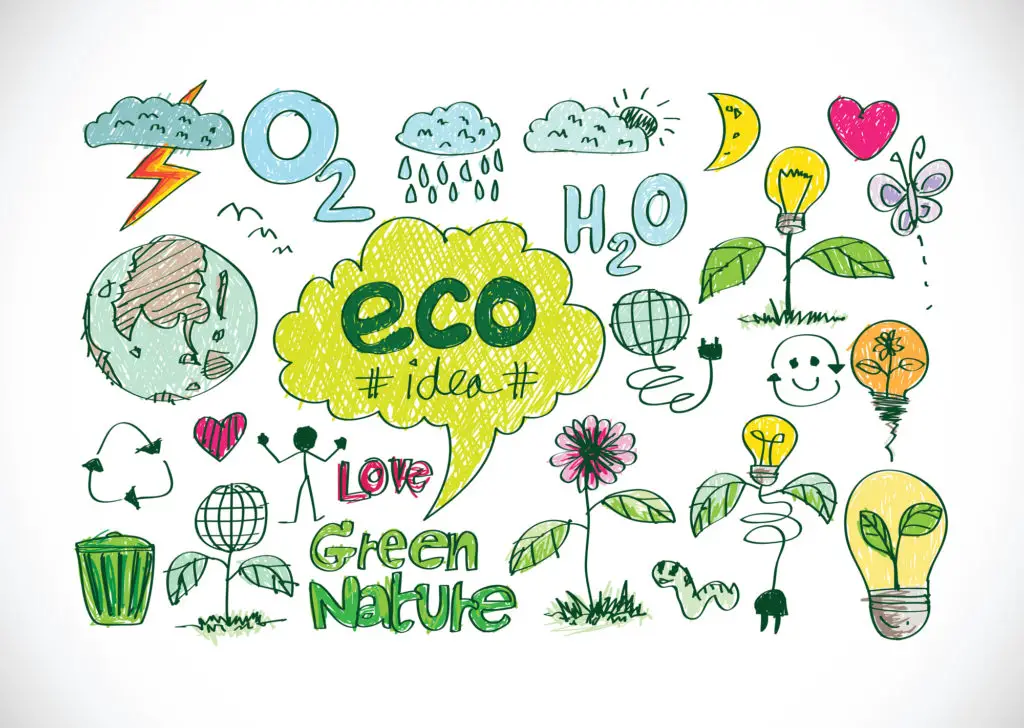 Long before climate change entered the vernacular, environmentalism was alive and well. Earth Day started more than 50 years ago to raise awareness of environmental dangers; the annual celebration continues today. (Those of you old enough will remember the PSA featuring the crying Native American.)
Long before climate change entered the vernacular, environmentalism was alive and well. Earth Day started more than 50 years ago to raise awareness of environmental dangers; the annual celebration continues today. (Those of you old enough will remember the PSA featuring the crying Native American.)
The theme for Earth Day this year is “Restore Our Earth™”.
Brief history of Earth Day
Earth Day started on April 22, 1970. From EarthDay.org:
| “Senator Gaylord Nelson, a junior senator from Wisconsin, had long been concerned about the deteriorating environment in the United States. Then in January 1969, he and many others witnessed the ravages of a massive oil spill in Santa Barbara, California. Inspired by the student anti-war movement, Senator Nelson wanted to infuse the energy of student anti-war protests with an emerging public consciousness about air and water pollution.” |
| Groups that had been fighting individually against oil spills, polluting factories and power plants, raw sewage, toxic dumps, pesticides, freeways, the loss of wilderness and the extinction of wildlife united on Earth Day around these shared common values. Earth Day 1970 achieved a rare political alignment, enlisting support from Republicans and Democrats, rich and poor, urban dwellers and farmers, business and labor leaders. By the end of 1970, the first Earth Day led to the creation of the United States Environmental Protection Agency and the passage of other first of their kind environmental laws, including the National Environmental Education Act, the Occupational Safety and Health Act, and the Clean Air Act. Two years later Congress passed the Clean Water Act. A year after that, Congress passed the Endangered Species Act and soon after the Federal Insecticide, Fungicide, and Rodenticide Act.” |
Even before Earth Day began, environmentalists began publication in 1968 of The Whole Earth Catalog. The publication featured a NASA photo of the earth from space and won the National Book Award (I have a copy of the first The Whole Earth Catalog). It featured environmentally-sensitive products, tools, seeds, and ideas for do-it-yourselfers.
Earth Day lessons for your business
Whether or not a “New Green Deal” is enacted, businesses can’t ignore the trends in consumer preference, governmental direction, and scientific data. Car manufacturers are moving toward electric-powered vehicles (e.g., GM said its fleet will be 100% electric by 2035).
Decide how your business can reduce its carbon emissions and become “greener.” The best green practices were discussed in a prior blog.
Use tax incentives to help your business
The federal government offers a number of tax incentives—deductions and credits—to help reduce the cost of going green.
- Buy electric-powered vehicles. A tax credit of up to $7,500 applies for the purchase of certain plug-in electric vehicles. Find a list of qualified vehicles and their credit amount (if any) from the IRS.
- Upgrade your commercial building. For a building that meets certain criteria, there’s a deduction of $1.80 per square foot (adjusted for inflation). This deduction has been set to expire at the end of 2020, but has been made permanent. The 2021 inflation adjustment has not yet been announced.
- Construct energy efficient homes. If you’re a home builder, you may qualify for a tax credit of up to $2,000 for constructing an energy-efficient “dwelling unit.” The smaller credit applies to those who manufacture energy-efficient homes. This credit had been set to expire at the end of 2020, but has been extended the end of 2021.
Also check for state and local tax incentives.
Final thought
Rachel Carson, American marine biologist whose book, Silent Spring, is often credited as the start of the environmentalist movement, said: “The human race is challenged more than ever before to demonstrate our mastery, not over nature but of ourselves.”
It’s Earth Day for a reason.


